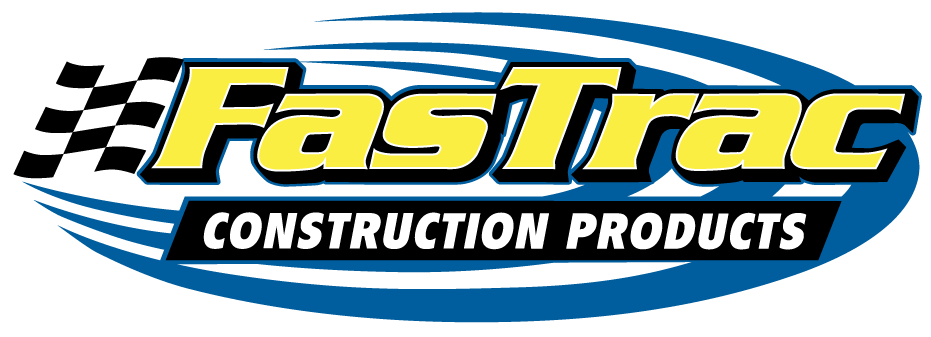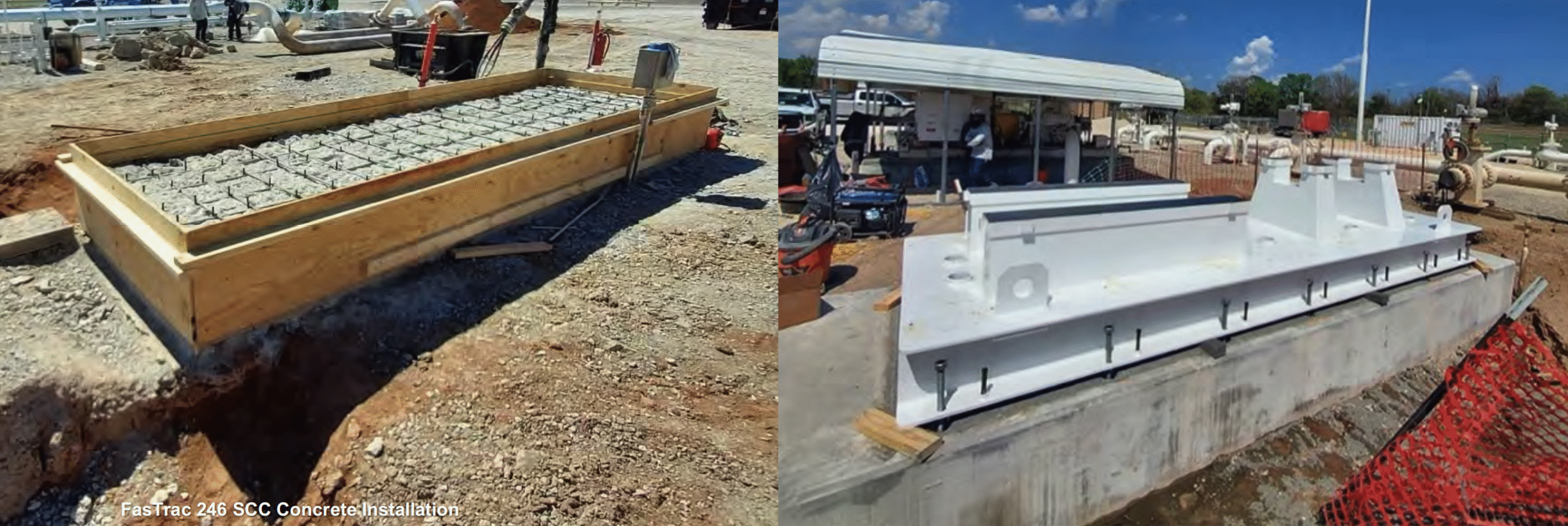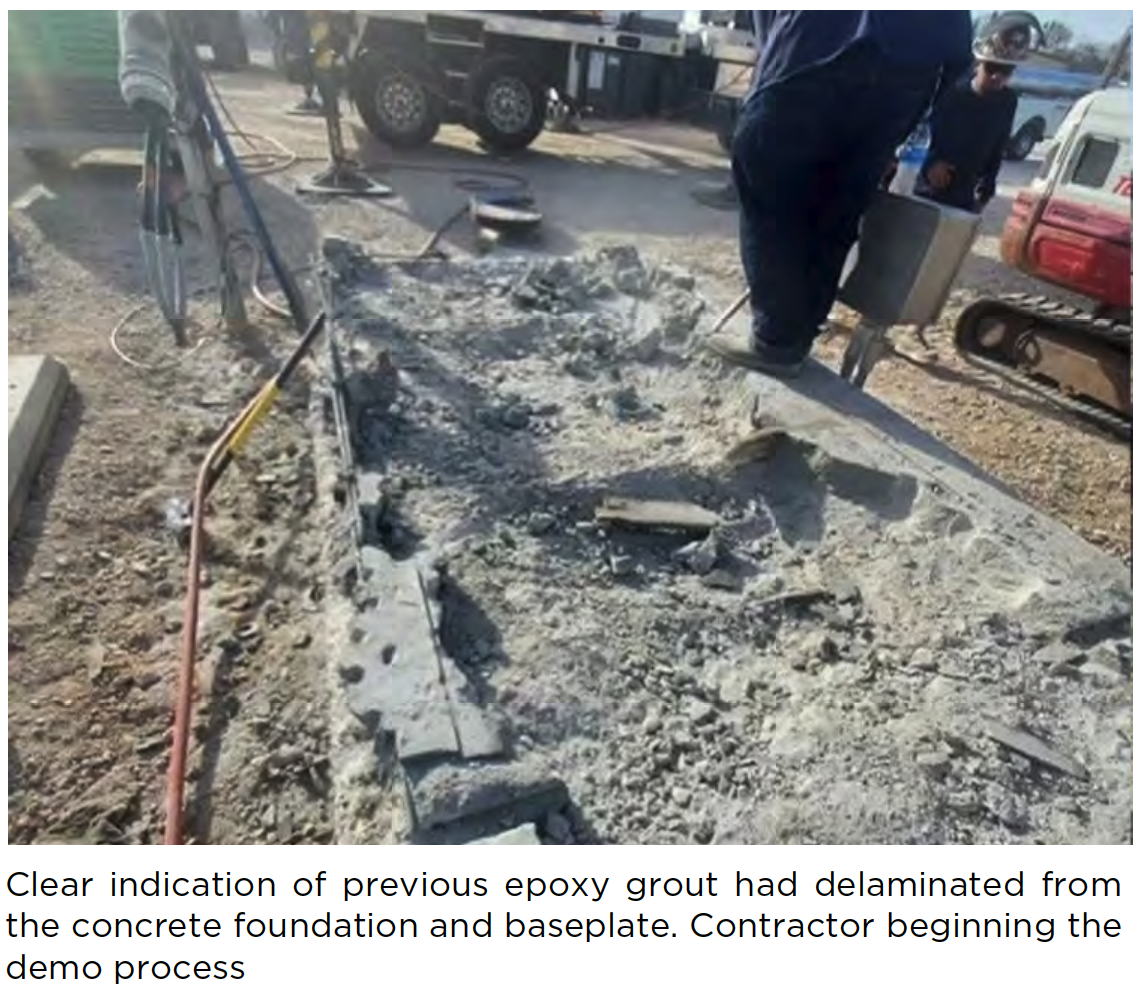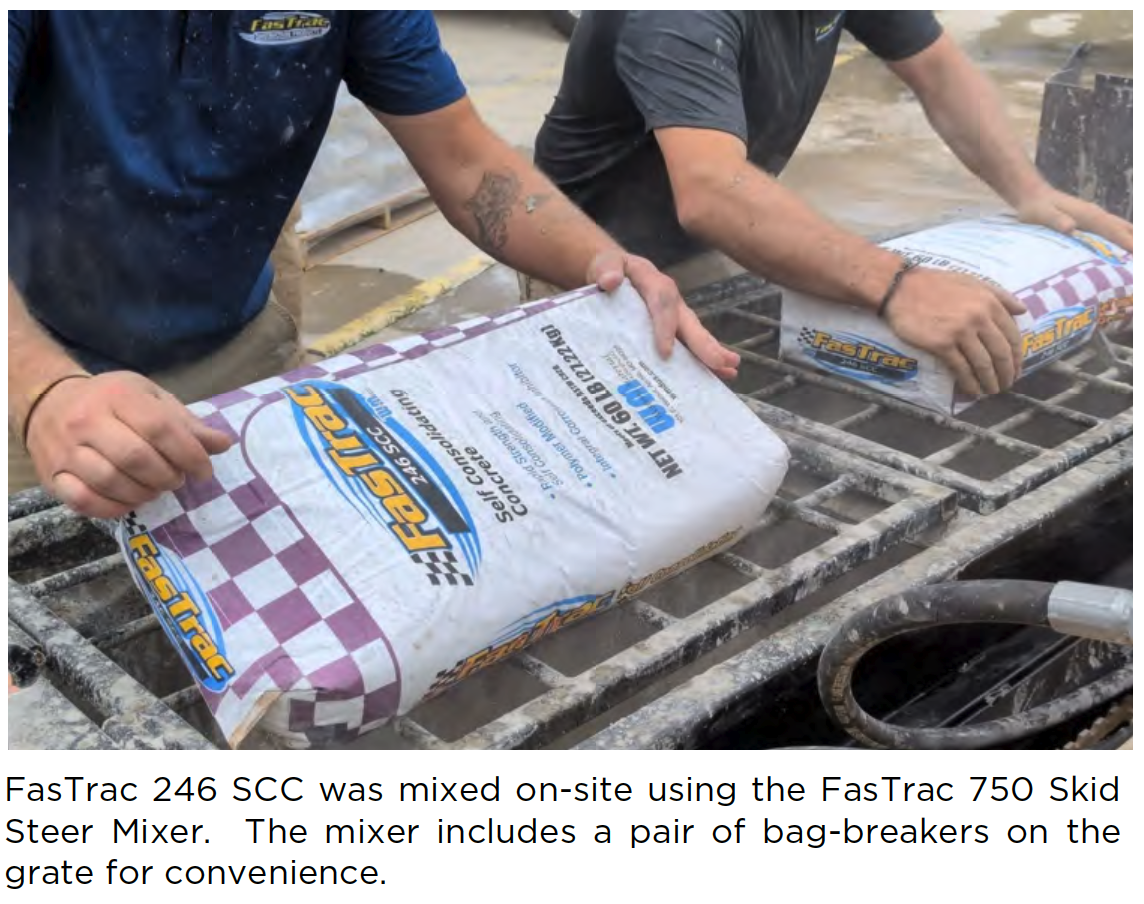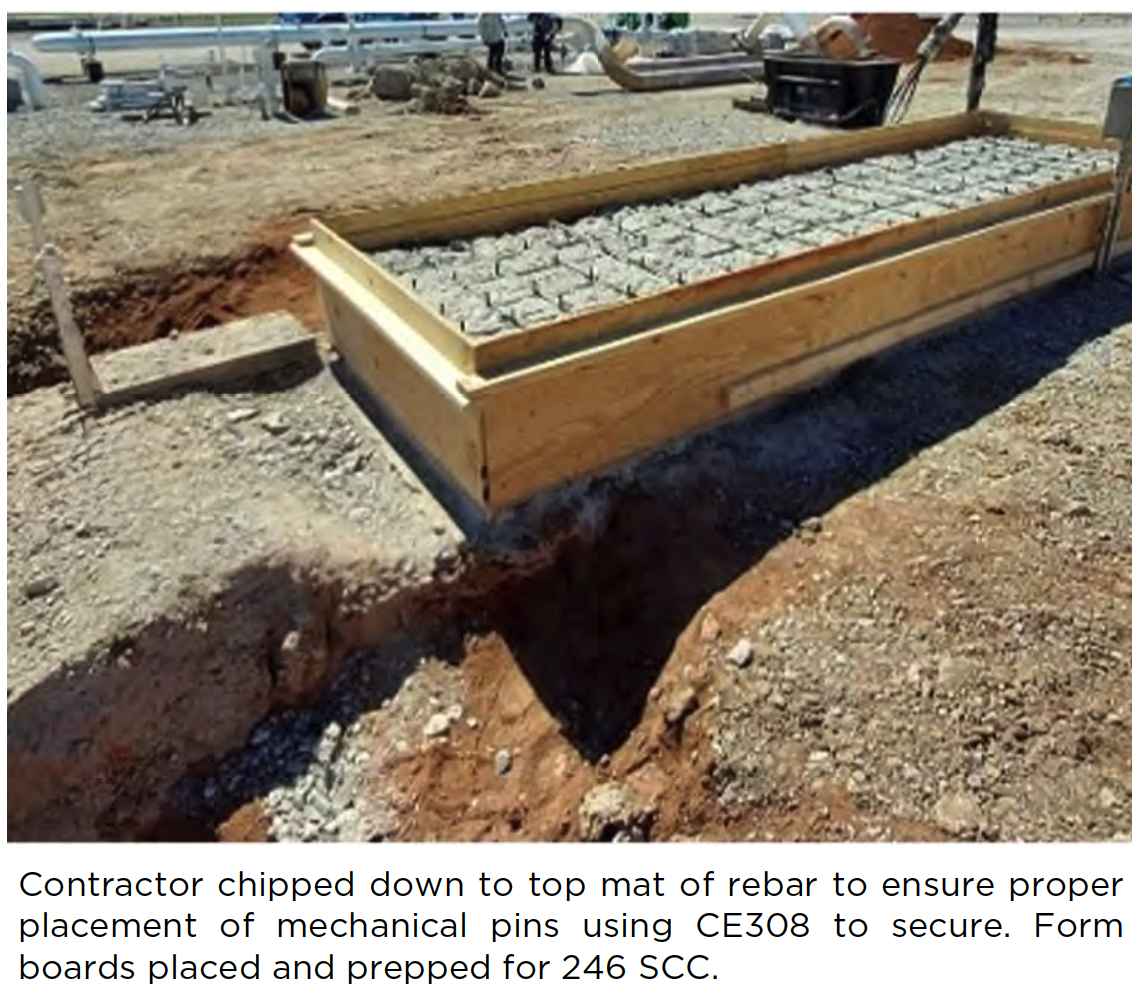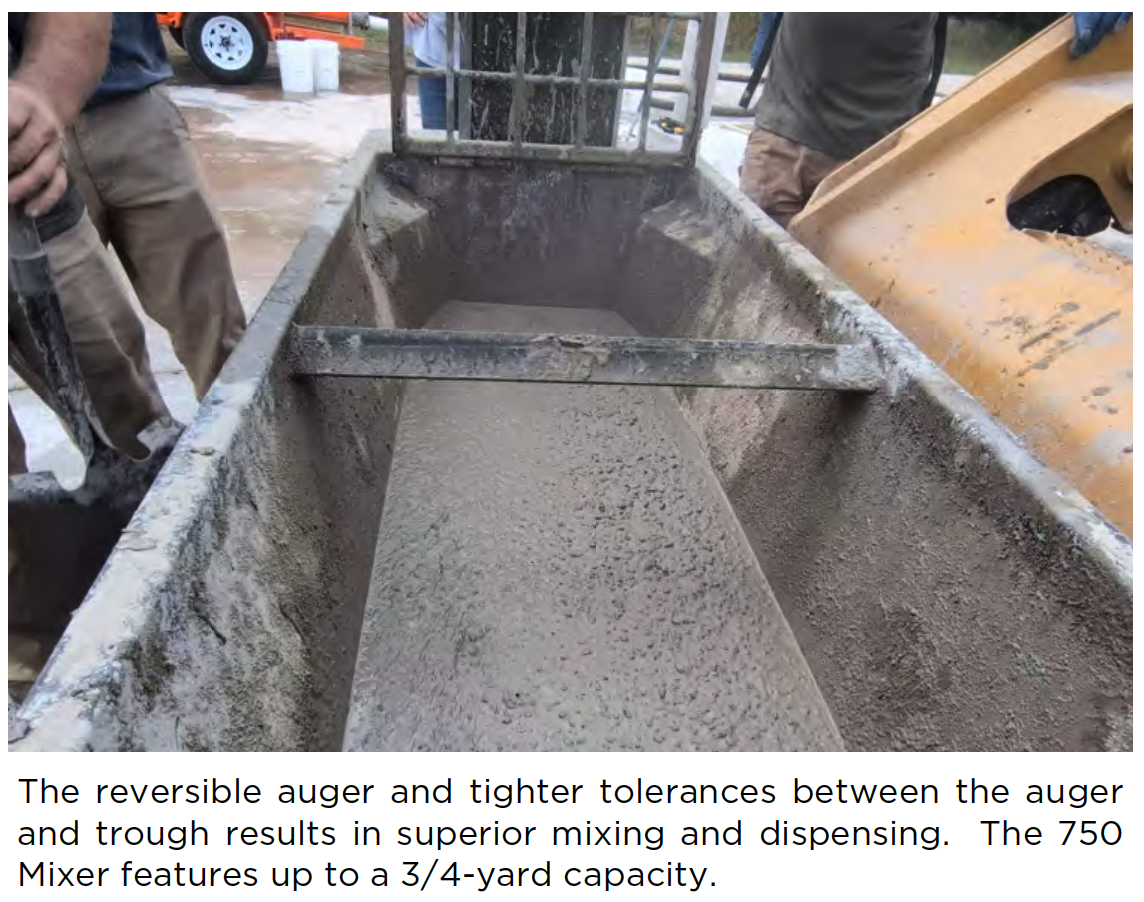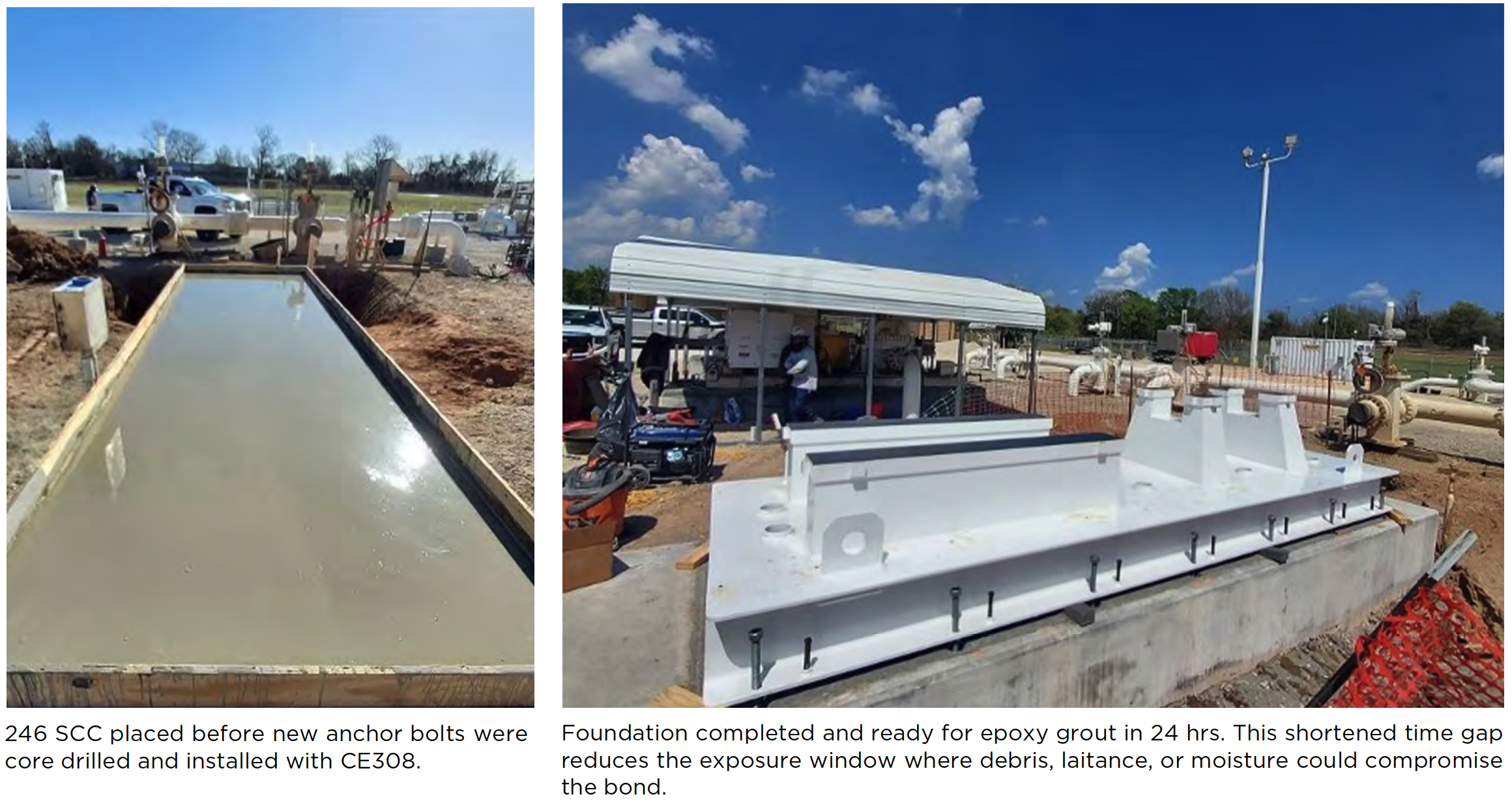Very Low Drying Shrinkage, resulting in:
a) Dimensional Stability – Low drying shrinkage keeps the foundation from changing shape as it cures, preventing distortion that could compromise the base.
b) Maintaining Equipment Alignment – Stable concrete ensures shafts, couplings, and base plates remain aligned, reducing vibration and premature wear.
c) Reduced Cracking – Minimizing shrinkage lowers internal stresses, which prevents cracking and preserves the strength of the foundation.
d) Improved Vibration Control – An intact, crackfree foundation maintains its stiffness and mass, helping it absorb and dampen dynamic forces.
e) Longevity and Reliability – With less cracking and misalignment, the foundation lasts longer, requires fewer repairs, and provides more consistent equipment performance.
Self-Consolidating, resulting in:
a) Complete Fill Around Anchors – 246 SCC flows freely into congested reinforcement and around anchor bolts without the need for vibration, giving a more reliable bond and support.
b) Fewer Voids and Honeycombs – Because it consolidates under its own weight, 246 SCC minimizes trapped air and honeycombing, which improves stiffness and load transfer.
c) Minimal Finishing & Reduced Laitance – 246 SCC settles with a smooth surface finish on its own, requiring less manual finishing, while also reducing laitance (the weak, powdery surface layer) since it isn’t over-worked with vibration or troweling.
d) Improved Vibration Performance – A dense, uniform foundation with fewer surface or internal defects helps control vibration and dynamic response for rotating machinery.
e) Enhanced Durability – By producing a homogenous, well-consolidated matrix, 246 SCC reduces permeability and cracking risk, extending the life of the foundation.
Epoxy Grout Installation in as Little as 24 hours
a) Faster Equipment Commissioning – Traditional cementitious grouts often require 7–28 days of curing before machinery can be placed under load. Epoxy grout’s rapid strength gain means equipment can be aligned, grouted, and put into service much sooner, minimizing downtime.
b) Reduced Project Delays – On industrial projects, foundation and grouting are often on the critical path. Being able to grout after 24 hours allows construction teams to overlap schedules, keeping the project moving efficiently.
c) Earlier Alignment Stability – The quicker grout placement locks anchor bolts and base plates into position sooner, reducing the risk of foundation movement or misalignment during the waiting period.
d) Lower Risk of Contamination or Damage – The shorter time gap between concrete placement and grouting reduces the exposure window where debris, laitance, or moisture could compromise the bond.
Formwork Can Be Removed in as Little as 1 Hour
a) Accelerated Construction Schedule – Early formwork removal means crews can move to the next steps of construction much faster, keeping critical-path projects like equipment foundations on schedule.
b) Reduced Labor & Equipment Costs – Less time waiting on forms means less crane time, fewer man-hours tied up in stripping, and lower overall labor costs.
c) Improved Workflow & Access – With forms out of the way quickly, the work area is cleared for grouting, anchor setting, or follow-up trades, reducing congestion around the foundation.
d) Lower Risk of Formwork Damage – The sooner forms can be safely removed, the less chance they are damaged by prolonged exposure to pressure, weather, or site traffic. Fill Around Anchors – 246 SCC flows freely into congested reinforcement and around anchor bolts without the need for vibration, giving a more reliable bond and support.
